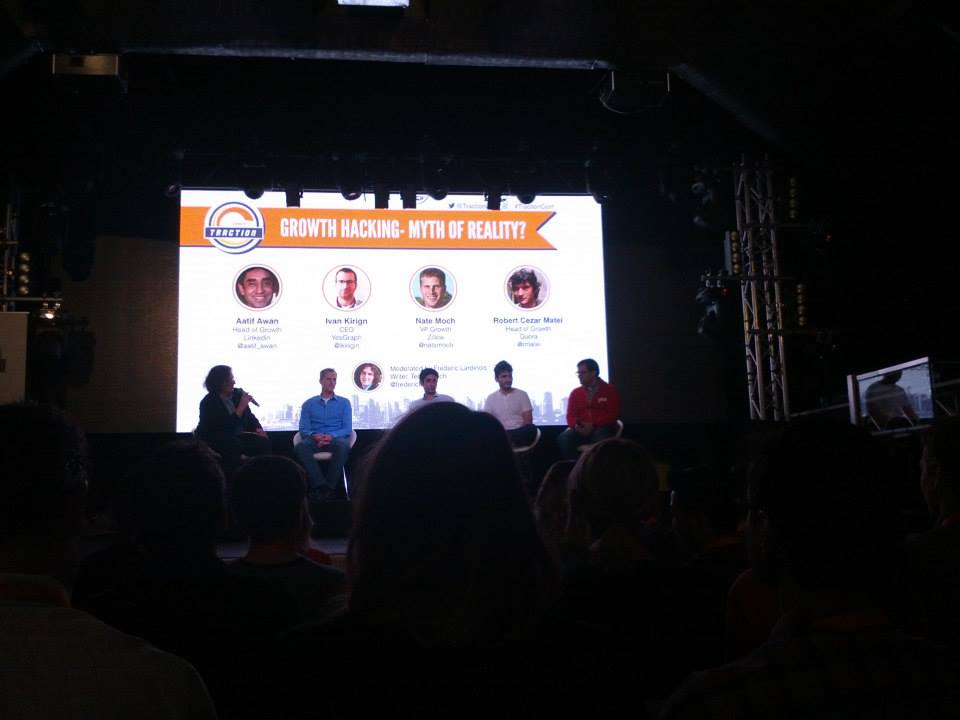
What if a tech company could build a perfect online service? Would the product know who its customers are? Would it change itself to appear perfect in your eyes? Could it make you behave how it wants you to behave? Yes, yes, and yes. Tech companies are increasingly adopting a new set of techniques to achieve phenomenal growth. I will be sharing some of the insights and anecdotes I learned from attending the Traction Conference.
The Traction Conference is a high-profile speaker series on “growth hacking” with over 500 attendees from all over the world and 91 speakers, mostly from Silicon Valley. The speakers are mostly CEOs and co-founders of wildly successful start-ups—many with $1B+ valuations.
A two-year old branch of data science, “growth hacking” is a buzzword describing the use of an empirical method, analytical creativity, and iterative product design to optimize a certain metric (e.g., signups, revenue, user retention). It’s an advanced method to make users behave how you want them to behave.
This new body of knowledge is radically changing how companies are approaching company growth. Companies like LinkedIn, Survey Monkey, Marketo, and many more are hiring STEM practitioners to build growth engines that are deeply rooted in analytics and the scientific method. A/B testing, iterative product design, tracking cookies, social integration, machine learning models, user clustering, and automated engagement campaigns are just some of the technical methods being employed.
Aside from sharing best practices, analytics frameworks, and technicalities, the speakers shared excellent stories. Here are just a few examples:
- A $2B company has a Revenue Engineering team whose goal is to achieve price discrimination. Based on your location, device, browser, and behaviour on the website, the prices on the “Pricing” page will change as an algorithm estimates your willingness to pay. Implementing this grew revenues by ~20%.
- A $25B company has an Engagement Engineering team whose goal is to keep you coming back to their product. The underlying principle: different users accept different levels of email frequency. The team tracks user behaviours and evaluates users’ tolerance for emails, binning them into “optimal” campaigns.
- An investment brokerage would use principles of behavioural economics to increase the likelihood of successfully upselling to its customers. To let them manage your money, you need to complete weekly homework assignments. The result is customers who religiously open emails and links, doing what they are told—a behaviour that raised the brokerage’s revenues by 84.7%.
- A web analytics company looked for ways to increase sign-ups on its website. It put first-time visitors through an educational 5-question quiz to engage them—a move that increased signups by 281%.
Where once a marketer would be rewarded for learning how to push the buttons of a customer segment, today’s marketers are learning the shape, colour, contours, anticipated resistance force, and optimal push-frequency for each button of every single customer.
We are converging into a world with products that can predict user actions and prescribe treatments. The opportunities for improving upon these methodologies seem as endless as the opportunities to bring them outside of the tech industry. The nascent changes will radically change marketing activities, product development, customer behaviours, labour mixes—all while spawning secondary markets. How will you prepare for the maturity of “growth hacking”?
For those who are interested in the subject beyond the extent of an executive summary, I’m happy to get together for a chat; reach out to me on LinkedIn!
 Michael is an analytics enthusiast in his final year at the Beedie School of Business. He is studying MIS, Operations Management, Economics, and Business Analytics and Decision Making. He has gained diverse experiences from his analytics consulting projects, executive roles in tech startups, management consulting engagements, and M&A projects. Michael is particularly passionate about disruptive technology in machine learning, health tech, and clean tech.
Michael is an analytics enthusiast in his final year at the Beedie School of Business. He is studying MIS, Operations Management, Economics, and Business Analytics and Decision Making. He has gained diverse experiences from his analytics consulting projects, executive roles in tech startups, management consulting engagements, and M&A projects. Michael is particularly passionate about disruptive technology in machine learning, health tech, and clean tech.